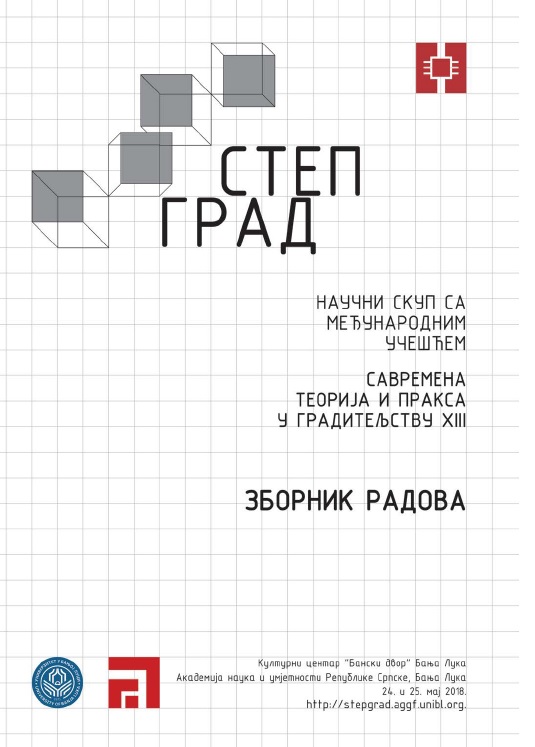ASSESSMENT OF HUMAN EXPOSURE TO VIBRATION AND NOISE IN RESIDENTIAL BUILDINGS
DOI:
https://doi.org/10.7251/STP1813715TAbstract
Vibration in buildings may occur from different external or internal sources. Where occupants can detect vibration in buildings, it may potentially impact their comfort or working efficiency. Some vibration sources give rise to audible effects such as structure-borne noise and airborne noise, and secondary rattling of building elements or contents. The international standard ISO 2631-2 concerns human exposure to whole-body vibration in buildings, but like most national standards, it doesn’t prescribe the permissible vibration amplitudes with respect to the comfort and annoyance of the occupants. Contrary to vibration standards, the national regulations concerning environmental noise prescribe the limits of allowed sound intensity in residential and office premises. This paper gives an overview of the process used to assess the influence of vibration and noise on humans in buildings. Also, a detailed case study regarding adverse comment due to noise and vibration in building is shown.Downloads
Published
2021-10-01
How to Cite
[1]
V. Golubovic-Bugarski, “ASSESSMENT OF HUMAN EXPOSURE TO VIBRATION AND NOISE IN RESIDENTIAL BUILDINGS”, STEPGRAD, vol. 1, no. 13, Oct. 2021.

